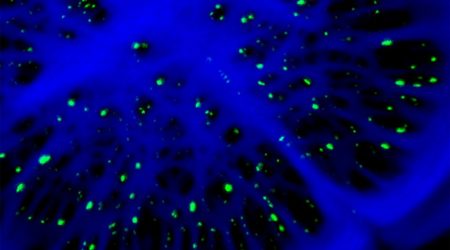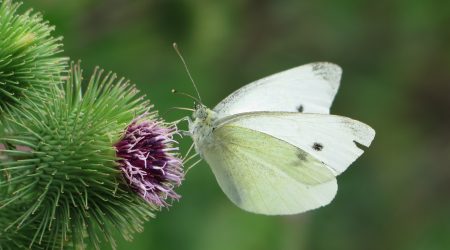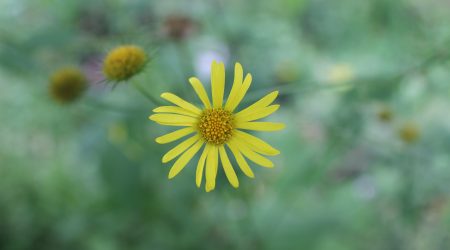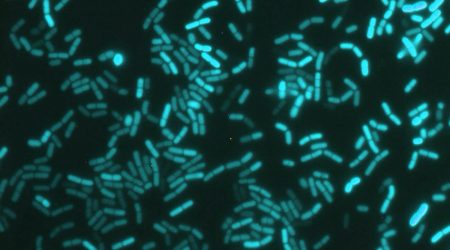How understanding plants’ internal clocks can help sustainable agriculture.
Circadian rhythms allow plants to sense and respond to daily changes in the environment and offer the potential to fine-tune agricultural practices to reduce chemical inputs and water use in the face of climate change.
Many living organisms have a biological clock, which produces 24-hour internal cycles known as circadian rhythms. At the John Innes Centre Professor Antony Dodd’s research group focuses on the role of these rhythms in plants.
The biological clock inside plants is crucial for their adaptation to the environmental challenges they face, such as changes in temperature, water availability and the seasons. Together, this contributes to plant growth and survival.
“Understanding them can provide insights into how living organisms – including our crops – might respond to climate change, while allowing us to discover completely new aspects of biology,” explains Professor Dodd.
Most knowledge of the molecular components of the circadian clock comes from research into the model plant species Arabidopsis thaliana, which has allowed scientists, including the Dodd group, to uncover the network of genes that are needed for plants to keep track of time.
Work is now underway to build on this expertise and carry out experiments in the field, including on crops such as wheat and brassicas.
The aim is to help improve the sustainability of agriculture, which is currently responsible for 23% of global greenhouse-gas emissions.
“Understanding circadian rhythms in the field will help us to develop crop varieties that make more efficient use of water, that are optimised for the use of specific agrochemicals, and that perform well across different latitudes and temperature conditions” says Professor Dodd.
Water use efficiency
Agriculture accounts for around 80% of fresh water used worldwide. Learning more about the processes that affect how much water plants use can help us develop crops that use less water.
Work by Professor Dodd showed that the opening of pores (stomata) in plant leaves is regulated by circadian clocks. Water is lost through stomata by transpiration, so understanding circadian rhythms might help to improve water-use efficiency.
The Dodd group found that when genes underlying circadian rhythms are changed in a particular way, some plants can grow strong and healthy while using less water. It is not only the circadian control of stomata that affects this, but also the role of the clock in the growth of the plant. So far, this work has been on Arabidopsis.
says Dr Luiza Lane de Barros Dantas, a scientist in the Dodd group.
“We need to see how circadian rhythms impact physiology and development in crop plants in natural conditions, so we are doing experiments to find out more”, says Professor Dodd.
Reducing chemical inputs
A key way to improve the sustainability of agriculture is to reduce chemical inputs. Currently, farmers use herbicides to fend off unwanted plants that use resources. Herbicides are expensive and can persist in the environment.
The Dodd group is investigating how we might reduce the use of herbicides. Their research has shown that the cellular circadian clock affects the efficacy of glyphosate on Arabidopsis.
explains Professor Dodd.
These exciting findings offer the potential to use less herbicide in agriculture.
Professor Dodd explains, “In the future, it might be possible to select the best time for spraying crops, to reduce the economic and environmental cost of their use”.
This concept echoes ‘chronotherapy’ or ‘circadian medicine’ in the clinic, where drugs are administered according to circadian rhythms to maximise their efficacy and minimise side effects.
“There might be plant species-dependent differences in these responses, and we need to do research in the field to see how we can translate our findings to help farmers”, Professor Dodd points out.
Climate change
We face the global challenge of an increasingly unpredictable climate, and this has the potential to alter the ways circadian rhythms influence plant physiology and development.
The team is examining the role of circadian rhythms in plants’ responses to the environment by taking advantage of natural variation in parts of the circadian clock manipulating plants to disturb the clock and interpreting the data from the field with mathematical modelling.
“We are trying to find out how changes in the environment are affecting a plant’s internal ability to sense and integrate these cues with their clock. For example, we are finding that the plant circadian clock has an important role in the resilience of photosynthesis to temperature changes”, says Dr Dantas.
Insights into the role circadian rhythms play are helping to develop alternative systems that reduce the waste and the carbon footprint of growing fresh produce, and increase the resilience of food production to weather change.
says Professor Dodd.
Vertical farms are protected from weather variations, are isolated from pests, and allow crop growth at a wider range of latitudes while using less water than conventional agriculture.
The Dodd group works with Bristol-based vertical farm and R&D company LettUs Grow, applying fundamental plant science to further boost sustainability and efficacy.









